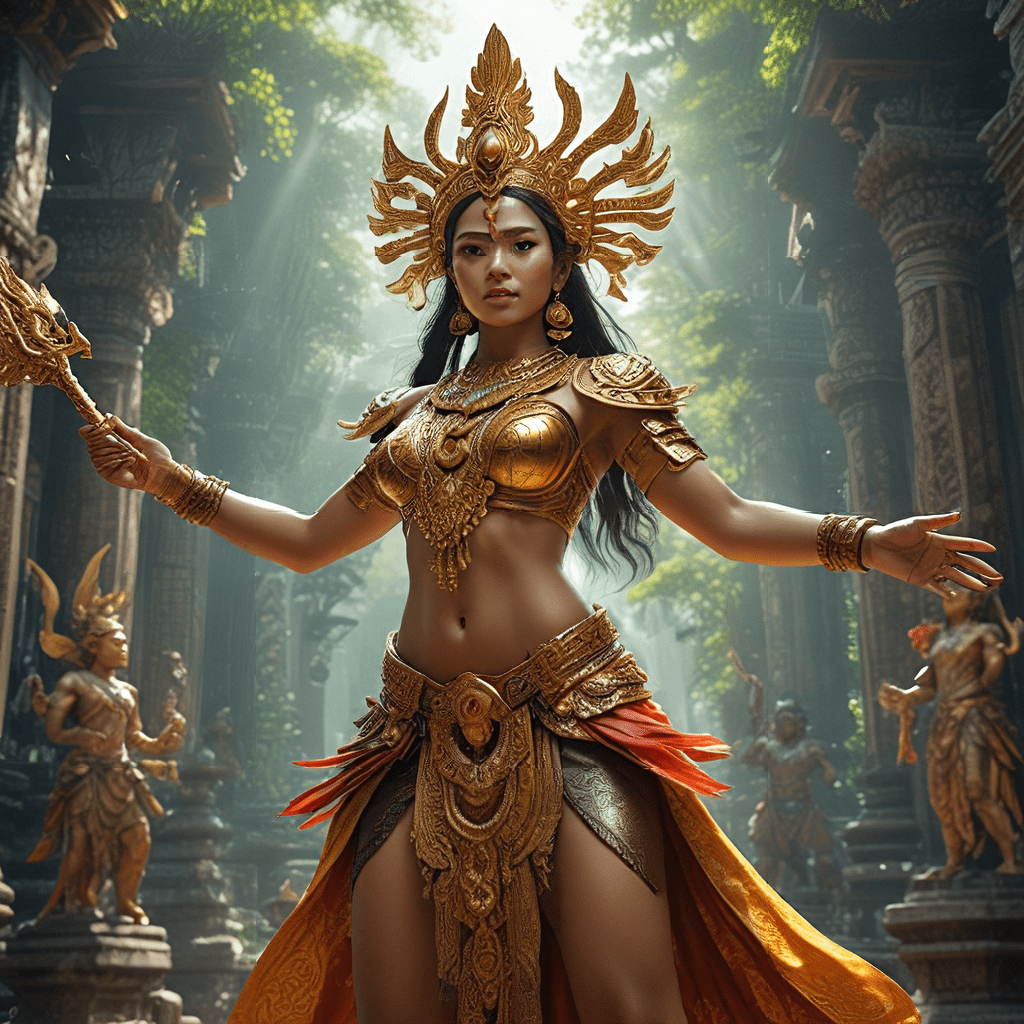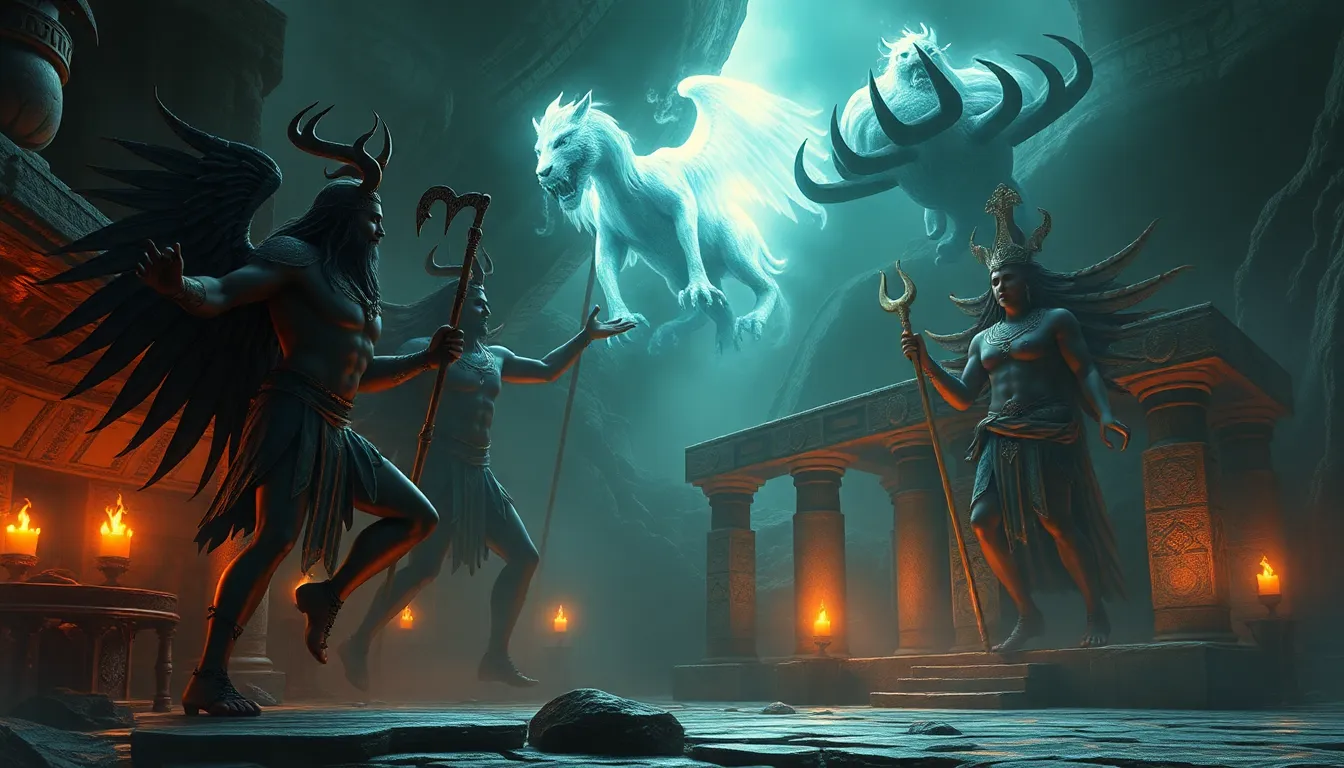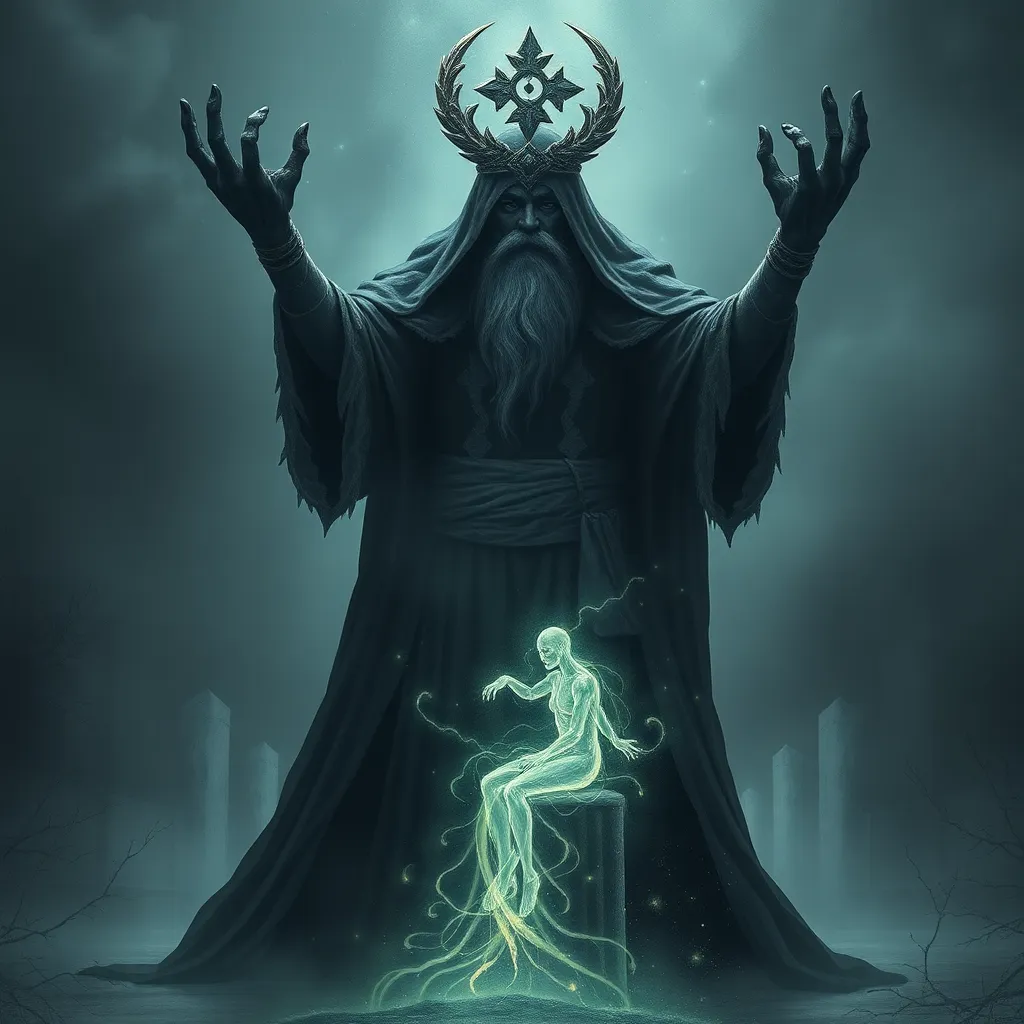Indonesian Mythology: Discover the Gods and Goddesses
Indonesia, a vast archipelago nation with a rich tapestry of cultures and traditions, is home to a vibrant and complex mythology. The stories of gods, goddesses, and mythical creatures are woven into the very fabric of Indonesian society, offering insights into the beliefs, values, and worldview of the people. This intricate mythology has been shaped over centuries by a confluence of indigenous beliefs, Hindu and Buddhist influences, and the impact of colonialism.
The Origins of Indonesian Mythology
Indonesian mythology has deep roots in the animistic beliefs of the indigenous people who inhabited the islands for millennia. These early Indonesians revered nature and saw spirits in every aspect of the natural world: in mountains, forests, rivers, and the sea. Ancestor worship was also central to their beliefs, with spirits of the deceased playing an important role in the lives of the living. These indigenous beliefs, although evolving over time, remain embedded in Indonesian mythology even today.
The arrival of Hinduism and Buddhism from India in the first centuries AD had a profound impact on Indonesian mythology. The Hindu pantheon of gods and goddesses was integrated into existing beliefs, creating a syncretic system that blended indigenous traditions with those of the newcomers. The stories of deities like Shiva, Vishnu, and Brahma found their place in Indonesian folklore, often taking on new meanings and interpretations in the local context.
Buddhist beliefs, particularly the concept of reincarnation and karma, also influenced Indonesian mythology, further shaping the understanding of life, death, and the afterlife. The blending of indigenous, Hindu, and Buddhist beliefs resulted in a rich and diverse mythological landscape, with stories that reflected the unique blend of cultures found in Indonesia.
The Pantheon of Gods and Goddesses
The Indonesian pantheon of gods and goddesses is a complex and diverse collection of figures, each with their own unique powers, roles, and stories. At the top of this hierarchy sits Sang Hyang Widhi Wasa, the supreme god representing the ultimate reality and source of all creation.
Another notable figure is Batara Guru, the god of creation and the ruler of Mount Meru, the mythical abode of the gods. He is often depicted as a powerful and majestic deity, responsible for maintaining order and justice in the universe.
Dewi Sri, the goddess of rice and prosperity, holds a significant place in Indonesian mythology. She is revered for her ability to bring abundance and fertility to the land, reflecting the importance of agriculture in Indonesian culture.
Batara Kala, the god of war and destruction, is a formidable figure often depicted as a fierce warrior. He represents the forces of chaos and destruction, reminding people of the cyclical nature of life and the inevitability of change.
Batara Kala, the mischievous trickster god, is another key figure in Indonesian mythology. He is known for his cunning and playful nature, often using his wit and intelligence to outsmart others. He plays a significant role in many myths and legends, highlighting the importance of humor, wit, and the unpredictable nature of life.
Stories and Legends
Indonesian mythology is rich in stories and legends, each offering a glimpse into the beliefs, values, and worldview of the people. These stories are passed down through generations, often serving as moral lessons and cautionary tales.
Some of the most famous myths include the story of Sang Hyang Widhi Wasa creating the world from the primordial chaos, Batara Guru and Dewi Sri falling in love and bringing prosperity to the land, and Batara Kala constantly trying to overthrow the gods.
The Role of Nature and the Supernatural
Nature plays a crucial role in Indonesian mythology. Mountains, forests, rivers, and the sea are all seen as sacred spaces inhabited by spirits, ancestors, and deities. These natural elements are often the setting for myths and legends, reflecting the deep connection between humans and the natural world.
The existence of spirits and the supernatural is deeply ingrained in Indonesian mythology. These beings are believed to influence human lives, both positively and negatively. Rituals and ceremonies are performed to appease the spirits, seek their blessings, or protect oneself from their wrath.
Ancestor worship is also a prominent feature of Indonesian mythology. The spirits of deceased ancestors are believed to continue to watch over their descendants, offering guidance and protection. Family shrines and ancestral tombs are often visited to honor their memory and seek their blessings.
The Significance of Ritual and Ceremony
Rituals and ceremonies play a vital role in Indonesian mythology, serving as a way to connect with the spiritual world and maintain harmony. These practices are deeply embedded in the cultural fabric of Indonesia, reflecting the belief that the world is a complex web of interconnected forces, both human and supernatural.
These rituals and ceremonies are often focused on appeasing spirits, seeking blessings from ancestors and deities, and protecting oneself from harm. Offerings of food, flowers, incense, and other items are presented to the spiritual beings, accompanied by prayers, chants, and traditional dances.
For example, in the Balinese Hindu tradition, the Ngaben ceremony is a complex funeral ritual that involves cremating the deceased with elaborate decorations and offerings. This ceremony is seen as a way to ensure a smooth transition for the soul into the afterlife and to avoid negative consequences for the living.
The Sedekah Laut (Sea Offering) ceremony in coastal communities is another example of a significant ritual. This ceremony involves offering food and other items to the spirits of the sea to ensure a bountiful harvest and safe passage for fishermen.
These rituals and ceremonies are not just religious practices; they are also a way of maintaining social cohesion and cultural identity. They bring people together, strengthen community bonds, and transmit knowledge and traditions to future generations.
Themes of Creation and Destruction
Creation and destruction are recurring themes in Indonesian mythology, reflecting a deep understanding of the cyclical nature of life and the universe. These themes are interwoven in many myths, highlighting the constant interplay between creation, growth, and decay, as well as the interconnectedness of all things.
Many myths describe the creation of the world from primordial chaos, often involving a supreme god who brings order and structure to the universe. The story of Sang Hyang Widhi Wasa, who creates the world from the "Kegelapan" (Darkness), is a prominent example.
The theme of destruction is often represented by powerful deities like Batara Kala, the god of war and destruction. He embodies the forces of chaos and change, reminding people that nothing lasts forever and that the cycle of destruction and renewal is an essential part of life.
The stories of creation and destruction often serve as cautionary tales, emphasizing the importance of balance, respect for the natural world, and the consequences of unchecked ambition or disregard for the sacred.
The Influence of Buddhism and Hinduism
The arrival of Buddhism and Hinduism in ancient Indonesia had a profound impact on the development of the pantheon of gods and goddesses, as well as the stories and themes that are central to Indonesian mythology.
Indonesian mythology absorbed and adapted elements of both religions, creating a unique blend of beliefs that reflected the local context. The Hindu trinity of Brahma, Vishnu, and Shiva found their place in the Indonesian pantheon, often taking on new roles and interpretations.
For example, Batara Guru is often identified with Shiva, the destroyer, but he also embodies the creative and protective aspects associated with the god. Dewi Sri, the goddess of rice and prosperity, is often linked to Lakshmi, the Hindu goddess of wealth and fortune.
Buddhist ideas about reincarnation and karma, the concept of suffering and the path to enlightenment, also influenced Indonesian mythology, enriching the understanding of the human condition and the nature of reality. The concept of karma, for example, is reflected in many myths and legends, highlighting the idea of cause and effect and the importance of living a virtuous life.
The influence of Buddhism and Hinduism is evident in the intricate rituals and ceremonies that are still practiced in Indonesia today. These rituals often incorporate both Hindu and Buddhist elements, reflecting the ongoing integration of these religious traditions into Indonesian culture.
The Influence of Buddhism and Hinduism
The arrival of Buddhism and Hinduism in ancient Indonesia had a profound impact on the development of the pantheon of gods and goddesses, as well as the stories and themes that are central to Indonesian mythology.
Indonesian mythology absorbed and adapted elements of both religions, creating a unique blend of beliefs that reflected the local context. The Hindu trinity of Brahma, Vishnu, and Shiva found their place in the Indonesian pantheon, often taking on new roles and interpretations.
For example, Batara Guru is often identified with Shiva, the destroyer, but he also embodies the creative and protective aspects associated with the god. Dewi Sri, the goddess of rice and prosperity, is often linked to Lakshmi, the Hindu goddess of wealth and fortune.
Buddhist ideas about reincarnation and karma, the concept of suffering and the path to enlightenment, also influenced Indonesian mythology, enriching the understanding of the human condition and the nature of reality. The concept of karma, for example, is reflected in many myths and legends, highlighting the idea of cause and effect and the importance of living a virtuous life.
The influence of Buddhism and Hinduism is evident in the intricate rituals and ceremonies that are still practiced in Indonesia today. These rituals often incorporate both Hindu and Buddhist elements, reflecting the ongoing integration of these religious traditions into Indonesian culture.
FAQ
Q: What are some of the most famous myths in Indonesian mythology?
A: Some of the most famous myths include the story of Sang Hyang Widhi Wasa creating the world, Batara Guru and Dewi Sri falling in love and bringing prosperity to the land, and Batara Kala constantly trying to overthrow the gods.
Q: How does Indonesian mythology view the relationship between humans and nature?
A: Indonesian mythology emphasizes a deep connection between humans and nature, seeing spirits and deities inhabiting mountains, forests, rivers, and the sea. Nature is viewed as sacred and worthy of respect.
Q: What is the significance of rituals and ceremonies in Indonesian mythology?
A: Rituals and ceremonies are an essential part of Indonesian mythology, allowing people to connect with the spiritual world, seek blessings, appease spirits, and maintain harmony between the human and supernatural realms.
Q: What are some of the key themes in Indonesian mythology?
A: Key themes include creation and destruction, the interconnectedness of all things, the importance of balance, the role of spirits and ancestors, and the power of stories and legends to transmit knowledge and values.




